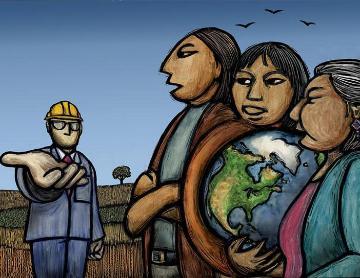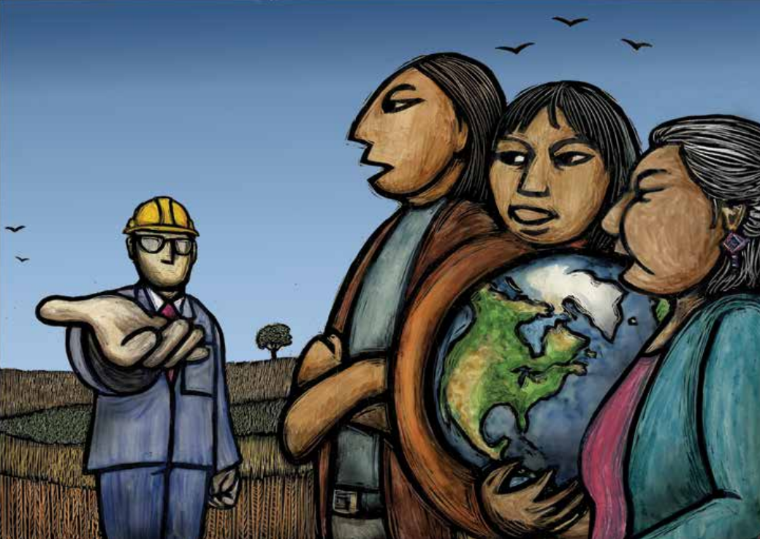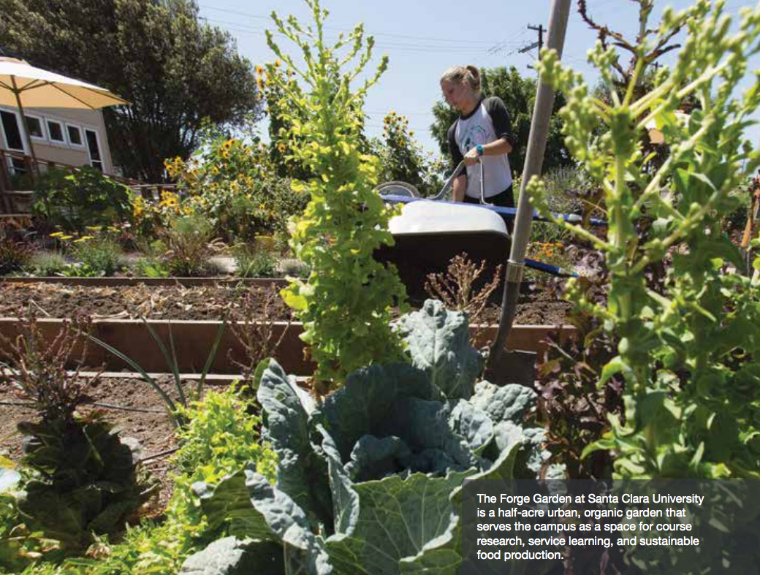
Valuing our Common Home
Response to Gretchen Daily’s Public Lecture,
“Our Future on a Shared Planet” Conference, Santa Clara University
By William Sundstrom

By William Sundstrom
Professor, Department of Economics,
Leavey School of Business,
Santa Clara University
In Laudato Si’, Pope Francis argues that the global problems of injustice and environmental catastrophe that we face can only be solved with radical changes in perspective and lifestyle. His encyclical is a powerful manifesto for such a profound cultural and social transformation.
I share the Pope’s sense of urgency and his critique of humanity’s current path. And perhaps the teachings of Francis and others will sufficiently move hearts and minds to bring about the needed changes. But as a pragmatist, I tend to place more hope in policies that harness baser human motivations—including financial—to steer technological innovation and consumerism toward a more sustainable path: a revolution of incentives, if you will.
I thus find myself in enthusiastic agreement with Professor Daily’s pragmatic, and profoundly hopeful, vision. I have admired her work for a long time. She has been a leading scholar and proponent of the idea of valuing ecosystem services and natural capital, and of using those valuations as an integral input to the decision-making process in both public and private life.
An important strength of this work, which comes across so clearly in her presentation, is the emphasis on decision-making processes at the scale of actual human institutions and communities. It is in fact possible to calculate the value of ecosystem services at the global scale, and such exercises come up with impressive numbers— amounts in the many, many trillions of dollars.1 Such estimates can serve a useful rhetorical purpose in reminding us how much we “owe” our planet, and how much we risk losing if we fail to save it. But these kinds of calculations cannot play the direct policymaking role that Professor Daily’s calculations of the value of, for example, regional watershed services do. For me, the message of her work is: “Think globally—calculate (and act) locally!”

Ricardo Levins Morales, “The Earth is Not For Sale,” scratchboard, ink and watercolor, 2015. Used with permission.
Placing a dollar value on natural capital and ecosystem services comes naturally to me as an economist. After all, economists are among the few people who are comfortable with the idea of selling the right to pollute, or deriving the dollar value of a human life. But employing valuation in a decision-making process does not require that we reduce all competing and plural values down to a single cash nexus. It does, however, acknowledge the fact that human decisions involve numerous tradeoffs between competing uses of resources and allocations of goods. Some reckoning of costs and benefits is an important step in assessing the tradeoffs. Much of the power of Professor Daily’s work is in taking a much broader, more flexible, and more nuanced view of what those costs and benefits are.
One might reject as reductionist, or even amoral, any thinking in economic terms about ecosystem services and natural capital, but I think it unlikely that doing so would result in a more thoughtful or participatory dialogue among all the relevant parties. Rather, typically what has happened in the past is that the value of nature is simply ignored or downplayed.
Our habit of shortchanging the planet comes as no surprise to economists. Ecosystem services are, as Cardinal Turkson suggested, a common resource. Common resources usually lack a particular stakeholder who owns them and captures market value from maintaining them. Even when there are such owners or stakeholders, it is not uncommon for them to be marginalized people—for example, indigenous peoples— who have limited political or economic power. Valuation can give those interests, and those stewards, a voice in the decision.
Professor Daily and her colleagues invite us to think about our common home much as a conscientious homeowner would think about the house that she or he lives in: as a source of essential services, including shelter, but also as an infrastructure for a variety of life-supporting and life-enhancing activities.
Like a private home, a factory, or even an education, our common home is of tremendous value to us, but it will depreciate in the absence of proper upkeep. Thinking about natural capital as part of the capital stock that must be maintained to continue providing services offers a suitably economic definition of sustainability. Namely, a sustainable economy is one in which the net impact of human activity leaves the next generation with a stock of capital—including physical, human, and natural capital—sufficient to maintain at least the standard of living of the previous generation.2
This definition of sustainability is anthropocentric in its focus on the value of nature for humans. But it is compatible with a diverse and all-encompassing view of the variety of human values, including aesthetic, spiritual, moral, and so on.

Doug Plummer
I'd like to finish my remarks by applauding one additional aspect of the approach Professor Daily has taken in much of her work. As our livelihoods here in Silicon Valley and elsewhere have moved away from the land, and our everyday lives have become increasingly urbanized, it’s easy to overlook the extent and depth of our continuing dependence on ecosystem services. Valuing ecosystem services and natural capital brings those critical life support systems back into view—even for us city or suburban folks.
Urbanization presents great challenges but also great opportunities for solving the crises of the environment and social justice. On the one hand, rapid urbanization does have the potential to isolate us from each other as well as from our experience of the natural world. That comes out very clearly in Pope Francis’ words: How can we expect solidarity with nature from someone who has spent their entire life in crowded apartments or shanties in Mumbai or Mexico City or Chicago?
But on the other hand, urbanization is one of the most promising avenues we have for reducing our carbon and land use footprints and for nurturing a rich, diverse, and tolerant—i.e., cosmopolitan—human community.3 In this respect, building livable, energy-efficient cities, with enough open space to keep us all sane, is really one of the most important investments we can make in both social and natural capital at this point in our history.
William A. Sundstrom is professor of economics at Santa Clara University. He is the author of numerous scholarly publications in economics and economic history. His current research focuses on the impact of climate change and poverty in developing countries as well as the causes and consequences of poverty and income inequality in the Silicon Valley region. He teaches courses in econometrics, environmental economics, and the economics of race and gender.
Notes
- Robert Costanza, Ralph d’Arge, Rudolf de Groot, Stephen Farber, Monica Grasso, et al., “The Value of the World’s Ecosystem Services and Natural Capital,” Nature Vol. 387 (May 1997), 253–260.
- Kenneth Arrow, et al., “Are We Consuming Too Much?” The Journal of Economic Perspectives, Vol. 18, No. 3, (Summer, 2004), 147-172. Professor Daily was a co-author of this influential article.
- Edward L. Glaeser and Matthew E. Kahn, “The Greenness of Cities: Carbon Dioxide Emissions and Urban Development,” Journal of Urban Economics, Vol. 67 (May 2010), 404–418.
| Previous: Securing the Well-Being of People and Nature: A Reflection on Laudato Si' | Home | Next: Laudato Si' and Inclusive Capitalism |